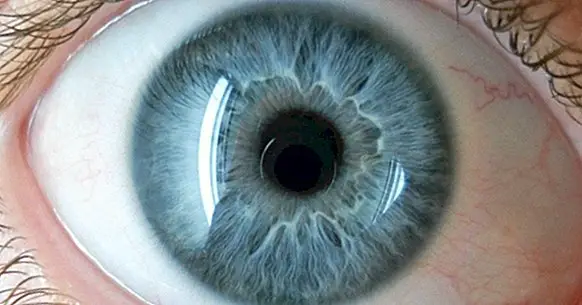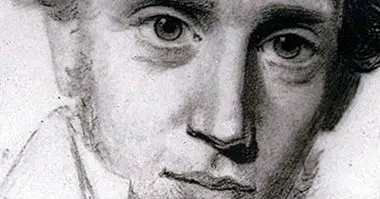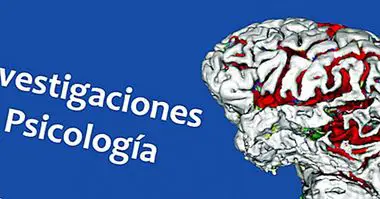Why do we automatically flash?
In our daily life we look constantly. We see and analyze what we observe through our eyes and, in fact, a large part of our cerebral cortex is dedicated to processing visual data. However, every few seconds something happens that we often do not even notice: we close our eyes to reopen them immediately.
Put another way, we blink. This action can be forced and even controlled by us if we pay attention to it, but as a general rule it is something that we do unconsciously and involuntarily. But why do we do this? Why do we automatically flash?
- Related article: "Does light make you sneeze? Quiet, there are more people like you"
The blink
We call blinking the process by which we open and close the eyelids at a relatively high speed . This action is semi-voluntary, with what it is possible to restrict or provoke it voluntarily if we wish and pay attention or even temporarily cancel it, but as a general rule its realization escapes our consciousness.
The human being blinks in half around fifteen to twenty times a minute , although it does not follow a fixed time pattern but it depends on the circumstances.
Causes of blinking
The blinking is produced mainly by the action of the striate, part of the basal ganglia (located in the depths of the brain), and is especially linked to the structure called pale balloon. It has also been implicated by the cerebellum.
Likewise, the autonomic nervous system is also linked to the flicker reflex, inhibiting it or facilitating it due to the need to activate the organism and to pay attention to the environment or to relax it.
The main reason we blink is to keep the eye protected and lubricated : since the eyes are the organ linked to the most external perception that we possess (together with the skin), it is necessary to be able to defend it from harmful chemical substances that can be harmful. Likewise, it needs lubrication to work constantly and allow a clear and clean vision, which allows the blinking.
In addition to this, the eyes are in constant operation and receive information continuously, so it is necessary to be able to rest them.
- Related article: "The 11 parts of the eye and its functions"
Blink functions
The blinking is an action that has multiple utilities and that can be altered for different reasons. Some of the main functions of the flicker are the following.
Eye defense
Blinking allows the eye not to be damaged by external harmful agents, such as chemicals, physical aggressions (we tend to blink when we see something approaching our eye too much) or even by an excessive level of light that can damage the inside of our eye.
Lubricate and clean the eye
The surface of the eye is a lens in which images from outside are to be reflected. One of the functions of the fact that we blink is keep the cornea clean and to allow its good functioning and state of health, since when we blink we spread the tears all over the surface of the eye.
Relax the eye and the brain
In addition to the eye, blinking relieves specific parts of the brain. It has been proven that the brain decreases the activation of the visual nuclei during the moments when we blink, something that helps us organize visual information .
Aspects that alter the rate of blinking
There are multiple circumstances that can alter the frequency of blinking in the human being. They usually have to do with the mood or the level of activation or arousal. Some of the aspects that alter the rhythm or frequency of blinking are the following
1. Attention, surprise and interest
When something surprises us or catches our attention, we tend to greatly diminish the frequency with which we blink and even stop doing it for a few moments. This allows that we do not lose information of the new situation or of what captures our interest.
2. Boredom and disinterest
Most people tend to blink less and more slowly when they are tired and / or bored.
3. Anxiety and nervousness
When we are nervous, stressed or anxious, most people tend to blink continuously and much more often than usual .
4. Consumption of psychoactive substances
The consumption of different substances with psychoactive effects can also alter the flicker, reducing it or increasing it.
- Maybe you're interested: "Types of drugs: know their characteristics and effects"
5. Medical illness or mental or neurological disorders
It has been shown that different medical illnesses or even mental disorders occur with either the alteration or the elimination of the blinking. In fact, the absence of blinking can be understood as a symptom of a disorder .
People suffering from tic disorders, strokes or dementias or other disorders that progress with a progressive degeneration of mental functions usually have an altered or even absent flicker.
Alterations have also been seen in subjects with mood disorders (People with depression tend to blink less and more slowly while people in manic phases tend to blink to a greater extent). In the same way, people with schizophrenia and other psychotic disorders can present this type of alterations.



















